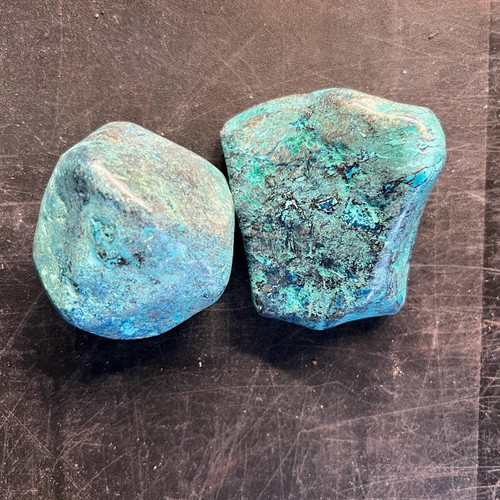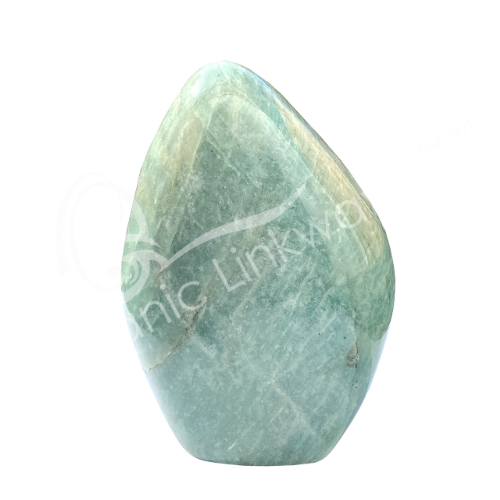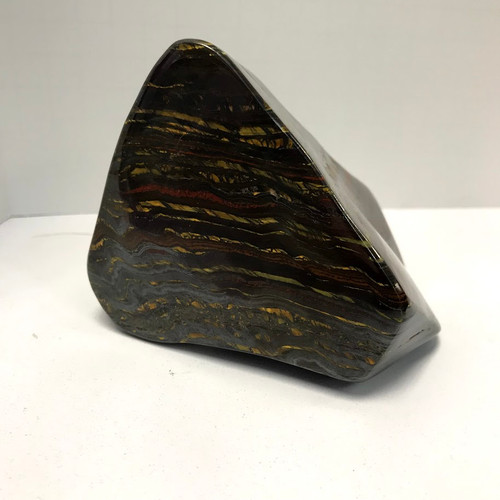Product Description
Onyx Freeform Bowls 18"-24"
Mineral Information:
Onyx is a variety of chalcedony, which is a type of microcrystalline quartz. It is a popular gemstone known for its smooth texture, banded appearance, and wide range of colors. Onyx is formed through the deposition of silica-rich fluids in the cavities of rocks, resulting in the formation of layered bands or stripes.
Here are some key characteristics and features of onyx:
-
Colors: Onyx occurs in a variety of colors, including black, brown, white, gray, blue, green, and red. The color of onyx is often uniform within each layer or band, creating a distinct contrast between different bands. Black onyx is one of the most well-known and widely used varieties.
-
Banded Structure: Onyx is characterized by its banded or layered structure, with alternating bands of different colors or shades. The bands can be parallel or curved, and their thickness can vary. This distinctive banded appearance is a defining feature of onyx.
-
Translucency: Onyx is typically translucent to opaque, meaning it allows varying degrees of light to pass through it. The level of translucency can depend on the specific variety and quality of the onyx.
-
Mohs Hardness: Onyx has a hardness of 6.5 to 7 on the Mohs scale, which means it is relatively durable and less prone to scratching compared to softer gemstones. However, it is still important to handle onyx with care to avoid damage or scratches.
-
Uses: Onyx has been used for centuries in jewelry, sculpture, and decorative objects. It is often cut and polished into cabochons, beads, cameos, and other forms to showcase its banded patterns and colors. Onyx is also used as a material for countertops, wall tiles, and ornamental carvings.
Metaphysical Meaning:
Onyx is believed to possess various properties and meanings. It is often associated with strength, protection, grounding, and self-control. Different colors of onyx are believed to have additional metaphysical properties associated with their respective colors.
Mineral Care:
Onyx, as a variety of quartz, is relatively durable compared to some other gemstones. However, it is important to note that onyx is not as hard as materials like sapphire or diamond. While onyx can withstand everyday wear, it is still necessary to handle it with care to avoid potential damage.
Here are some factors to consider regarding the fragility of onyx:
-
Hardness: Onyx has a hardness rating of 6.5 to 7 on the Mohs scale of mineral hardness. While this is a decent hardness, it means that onyx is more susceptible to scratches compared to gemstones with higher hardness. It is important to avoid contact with materials that have a higher hardness, such as other gemstones or minerals, to prevent scratches on the surface of the onyx.
-
Cleavage: Onyx does not exhibit cleavage, which is a tendency to break along specific planes. Instead, it has a conchoidal fracture, meaning it breaks in a curved or shell-like manner. This fracture type can make onyx prone to chipping or fracturing under significant force or impact.
-
Sensitivity to Heat and Chemicals: Onyx can be sensitive to sudden temperature changes and exposure to high heat. Extreme heat can cause thermal shock and result in cracks or fractures in the stone. Additionally, onyx should be protected from exposure to harsh chemicals, as they can damage its surface or cause discoloration.
To maintain the durability and longevity of onyx, here are some recommendations:
- Store onyx jewelry separately from other gemstones to avoid scratches.
- Avoid wearing onyx jewelry during activities that may subject it to excessive force or impact.
- Clean onyx gently using mild soapy water and a soft cloth or brush. Avoid ultrasonic cleaners or steam cleaning methods.
- Protect onyx from exposure to harsh chemicals and extreme temperatures.
- Handle onyx jewelry with care to prevent accidental drops or impacts.
Disclaimer:
No information here is intended to diagnose, treat or cure ailments or afflictions of any kind. One should always consult a medical professional if a serious issue presents itself.










